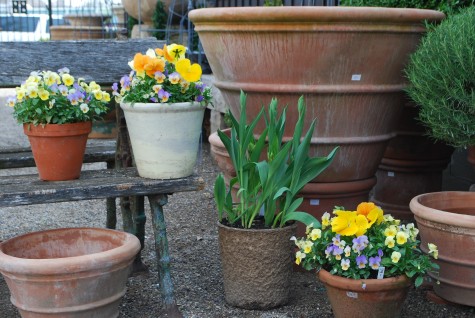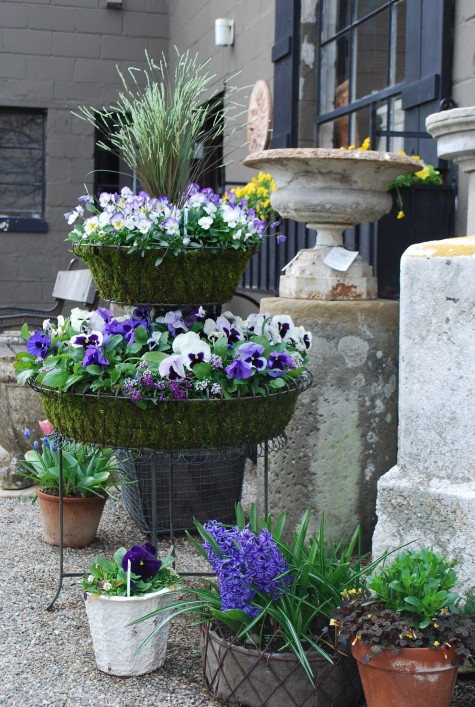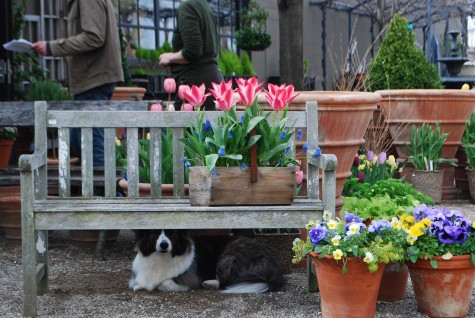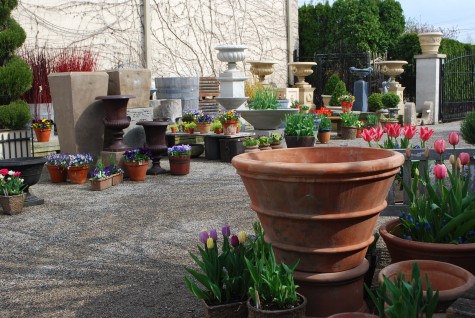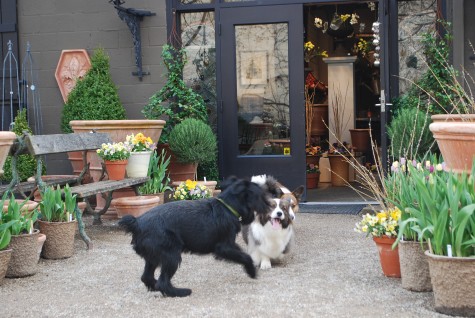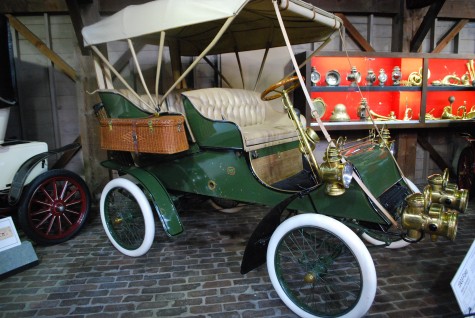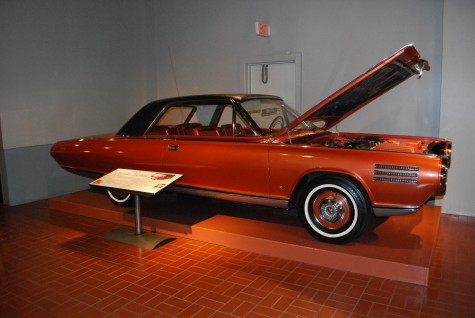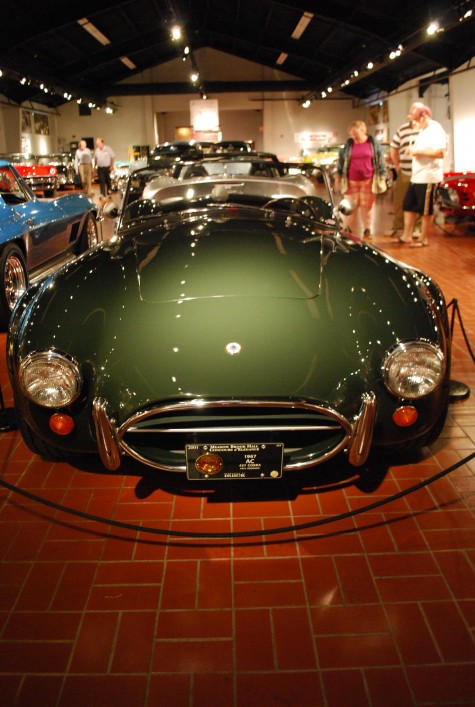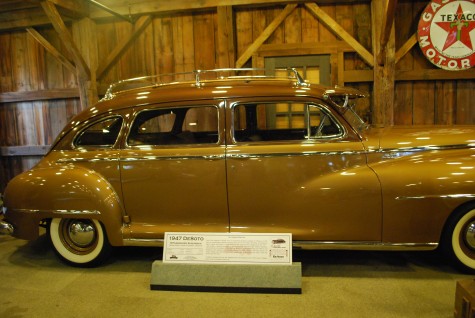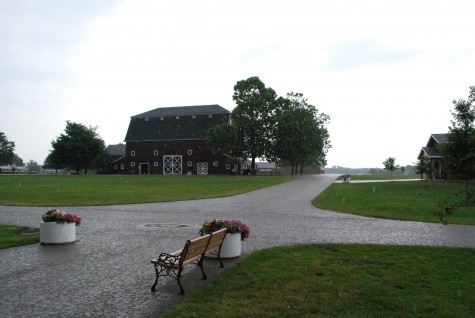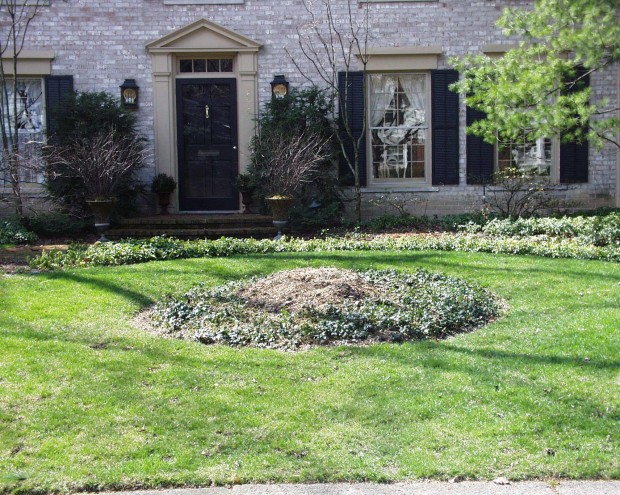 Small yards-don’t most people have them? I would not ever describe my property in terms of its acreage. I have a city lot, 105 feet on the short side, and 125.76 feet on the long side. I am a steward of 13,230 square feet. One city lot and a half. Just to put this in another perspective, the building that houses Detroit Garden Works is 9870 square feet. The building that houses my manufacturing company Branch is big enough to easily house Detroit Garden Works, and plenty big enough to house my entire house and property – comfortably. Though my landscape and garden has its overwhelming moments, it is not big. as in sea to shining sea big. The loss of a maple upwards of 80 years old in the front yard of the small urban property pictured above was a big loss.
Small yards-don’t most people have them? I would not ever describe my property in terms of its acreage. I have a city lot, 105 feet on the short side, and 125.76 feet on the long side. I am a steward of 13,230 square feet. One city lot and a half. Just to put this in another perspective, the building that houses Detroit Garden Works is 9870 square feet. The building that houses my manufacturing company Branch is big enough to easily house Detroit Garden Works, and plenty big enough to house my entire house and property – comfortably. Though my landscape and garden has its overwhelming moments, it is not big. as in sea to shining sea big. The loss of a maple upwards of 80 years old in the front yard of the small urban property pictured above was a big loss.
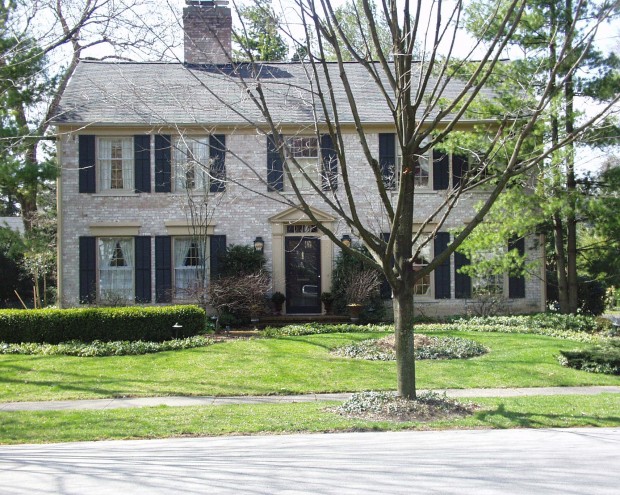 The loss of a big tree that had organized, for better or for worse, the entire front yard landscape of this small urban property, was a very big loss indeed. The landscape had lost some of its reason for being. Exposed for all to see from the street? A pair of kousa dogwoods near the front door that were struggling from the shade of the maple. A lack of any substantial landscape statement whatsoever on the right side of the front door. A pair of yews flanking either side of the front door that tolerated the shade were all of a sudden overpowering and gloomy. An architecturally noteworthy house looked lost at sea. Unbalanced. Utterly symmetrical architecture asks for an equally strong landscape. The big bump in the front yard was asking for an answer. The landscape-listing to one side.
The loss of a big tree that had organized, for better or for worse, the entire front yard landscape of this small urban property, was a very big loss indeed. The landscape had lost some of its reason for being. Exposed for all to see from the street? A pair of kousa dogwoods near the front door that were struggling from the shade of the maple. A lack of any substantial landscape statement whatsoever on the right side of the front door. A pair of yews flanking either side of the front door that tolerated the shade were all of a sudden overpowering and gloomy. An architecturally noteworthy house looked lost at sea. Unbalanced. Utterly symmetrical architecture asks for an equally strong landscape. The big bump in the front yard was asking for an answer. The landscape-listing to one side.
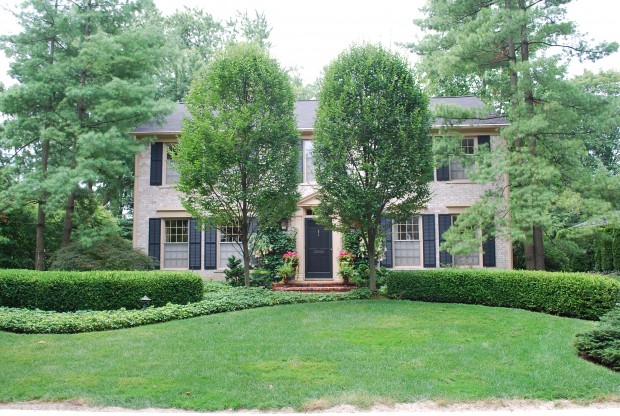 Small properties advertise their problems in a big and graphic way. It was not my idea to replace the tree in the front yard. Why would I propose to repeat an idea that did little to enhance this small property in the first place? I thought that a pair of carpinus that would flank and frame the front door, and a boxwood hedge on the right side that would answer the existing boxwood hedge on the left would bring some order to the landscape. My clients were great gardeners, and keen about the landscape. They liked informal, but orderly schemes. They had long been retired, and were not so interested in a landscape that would require a lot of lifting and hauling.
Small properties advertise their problems in a big and graphic way. It was not my idea to replace the tree in the front yard. Why would I propose to repeat an idea that did little to enhance this small property in the first place? I thought that a pair of carpinus that would flank and frame the front door, and a boxwood hedge on the right side that would answer the existing boxwood hedge on the left would bring some order to the landscape. My clients were great gardeners, and keen about the landscape. They liked informal, but orderly schemes. They had long been retired, and were not so interested in a landscape that would require a lot of lifting and hauling.
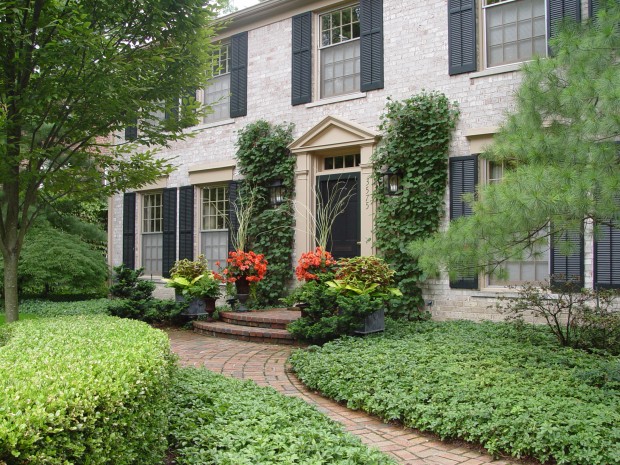 We removed the struggling dogwoods. They were so poor, I doubt anyone noticed. The yews got transplanted. In their stead, a pair of climbing hydrangeas. The big leaves are a welcome leafy texture; they were not in any way bothered by the northern exposure. Deep shade has few takers. Hydrangea petiolaris is slow to get going, but it is amazingly shade tolerant. The pachysandra may be the most ordinary ground cover on the planet, but it tolerates, and thrives, in tough conditions. Lush and green on the ground plane is a good thing.
We removed the struggling dogwoods. They were so poor, I doubt anyone noticed. The yews got transplanted. In their stead, a pair of climbing hydrangeas. The big leaves are a welcome leafy texture; they were not in any way bothered by the northern exposure. Deep shade has few takers. Hydrangea petiolaris is slow to get going, but it is amazingly shade tolerant. The pachysandra may be the most ordinary ground cover on the planet, but it tolerates, and thrives, in tough conditions. Lush and green on the ground plane is a good thing.
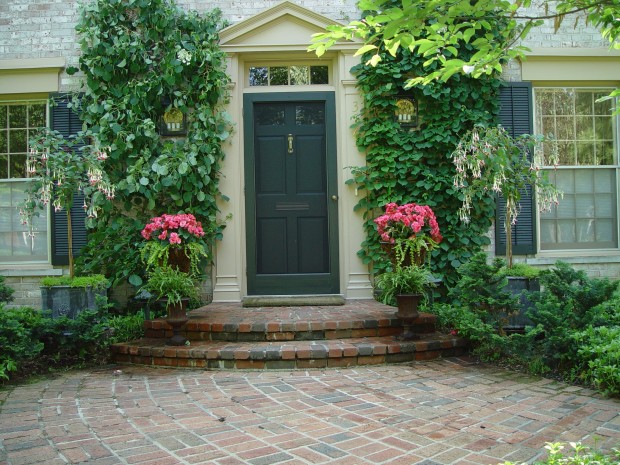 We kept the climbing hydrangea away from the front porch light fixtures-regular pruning keeps this climbing plant in bounds. Few other vining plants can clothe a wall so elegantly. We added a few pots to the front porch area-why not? Though my clients were not able to handle big digging, they were able and willing to look after those pots.
We kept the climbing hydrangea away from the front porch light fixtures-regular pruning keeps this climbing plant in bounds. Few other vining plants can clothe a wall so elegantly. We added a few pots to the front porch area-why not? Though my clients were not able to handle big digging, they were able and willing to look after those pots.
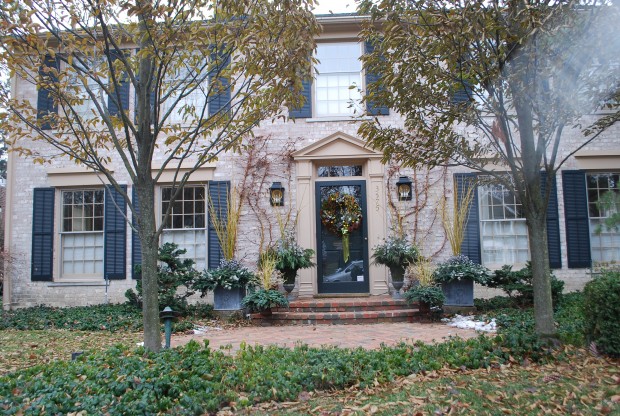 The columnar carpinus grew. They framed the view to the front door from the street. They divided the the public part of the landscape from the private and personal part of their home-the front door. Most happily, every other plant within their range was able to thrive. The porch had a little light. I do think that the nurturing of visually thoughtful relationships between shaded and sunny spaces in a landscape is crucial to good design. I believe it is even more crucial to small properties. The sun and shade can provide lots of atmosphere in the smallest space.
The columnar carpinus grew. They framed the view to the front door from the street. They divided the the public part of the landscape from the private and personal part of their home-the front door. Most happily, every other plant within their range was able to thrive. The porch had a little light. I do think that the nurturing of visually thoughtful relationships between shaded and sunny spaces in a landscape is crucial to good design. I believe it is even more crucial to small properties. The sun and shade can provide lots of atmosphere in the smallest space.
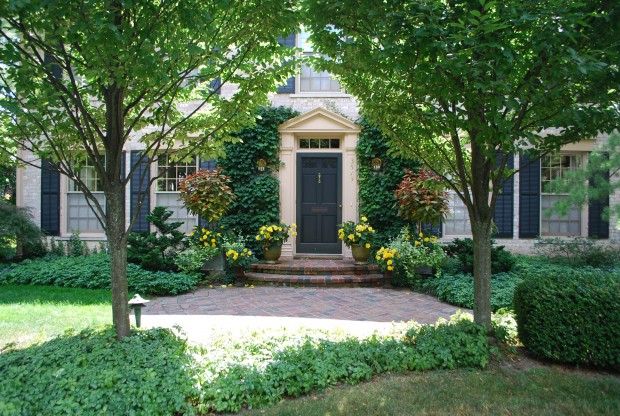 Directly underneath the carpinus -dappled shade. The pachysandra did not mind this irregular light. It grew lush and thick. On the house side-a small sun zone. Sun is inviting in a garden. The light attracts the eye. The interplay of sun and shade can provide so much interest in a very small space. From the sun to the shade and back to the sun-this creates a visual rhythm in a landscape composition that lacks physical space. Good design in small spaces asks for every base to be covered. How long does it take to cover every base on a small city lot? I am not there yet, so I can’t answer.
Directly underneath the carpinus -dappled shade. The pachysandra did not mind this irregular light. It grew lush and thick. On the house side-a small sun zone. Sun is inviting in a garden. The light attracts the eye. The interplay of sun and shade can provide so much interest in a very small space. From the sun to the shade and back to the sun-this creates a visual rhythm in a landscape composition that lacks physical space. Good design in small spaces asks for every base to be covered. How long does it take to cover every base on a small city lot? I am not there yet, so I can’t answer.
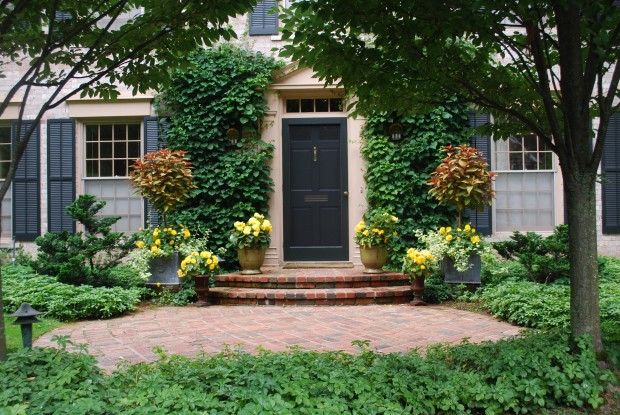 The loss of a very big and old tree presented an opportunity to celebrate a small front yard landscape in an entirely different way. A change up in a small environment is a pitch no gardener sees coming. I would encourage you to quit wringing your hands, and swing away. As it turns out, my clients loved being freed from a maple that entirely dominated their landscape. They were happy to have the opportunity to make the front porch details more important.
The loss of a very big and old tree presented an opportunity to celebrate a small front yard landscape in an entirely different way. A change up in a small environment is a pitch no gardener sees coming. I would encourage you to quit wringing your hands, and swing away. As it turns out, my clients loved being freed from a maple that entirely dominated their landscape. They were happy to have the opportunity to make the front porch details more important.
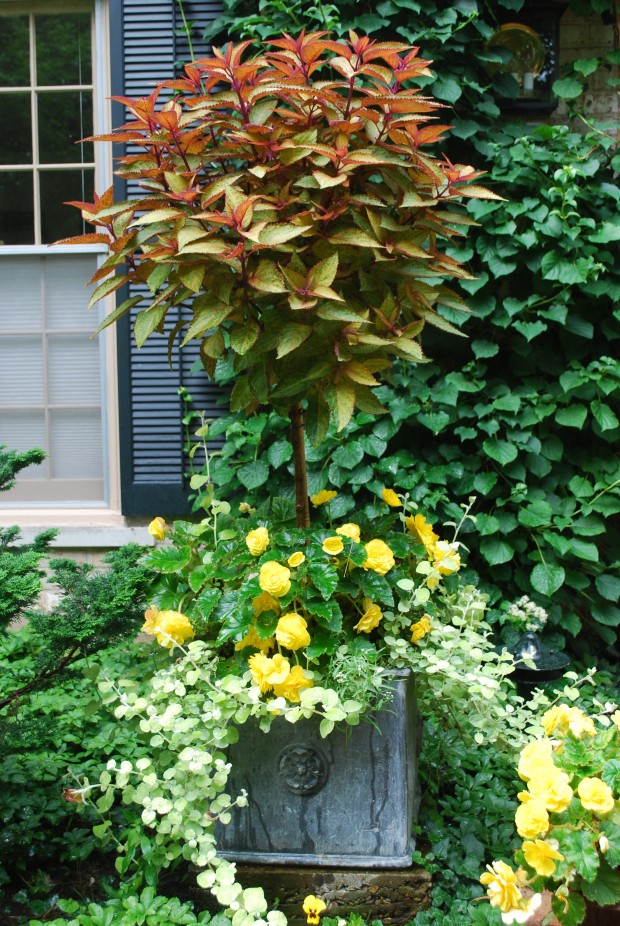 I did plant their pots differently every year. But no matter the scheme, I always planted non stop begonias. Mr. B had a way with them that was extraordinary. They grew for him. I have never seen better. Though he was always self effacing about his success growing them, I knew he brought his head, heart and experience to bear with them. The new landscape configuration was not maintenance free. No landscape thrives without attention. But a thriving landscape gave him the go ahead to devote his efforts to growing on the plants in his pots.
I did plant their pots differently every year. But no matter the scheme, I always planted non stop begonias. Mr. B had a way with them that was extraordinary. They grew for him. I have never seen better. Though he was always self effacing about his success growing them, I knew he brought his head, heart and experience to bear with them. The new landscape configuration was not maintenance free. No landscape thrives without attention. But a thriving landscape gave him the go ahead to devote his efforts to growing on the plants in his pots.
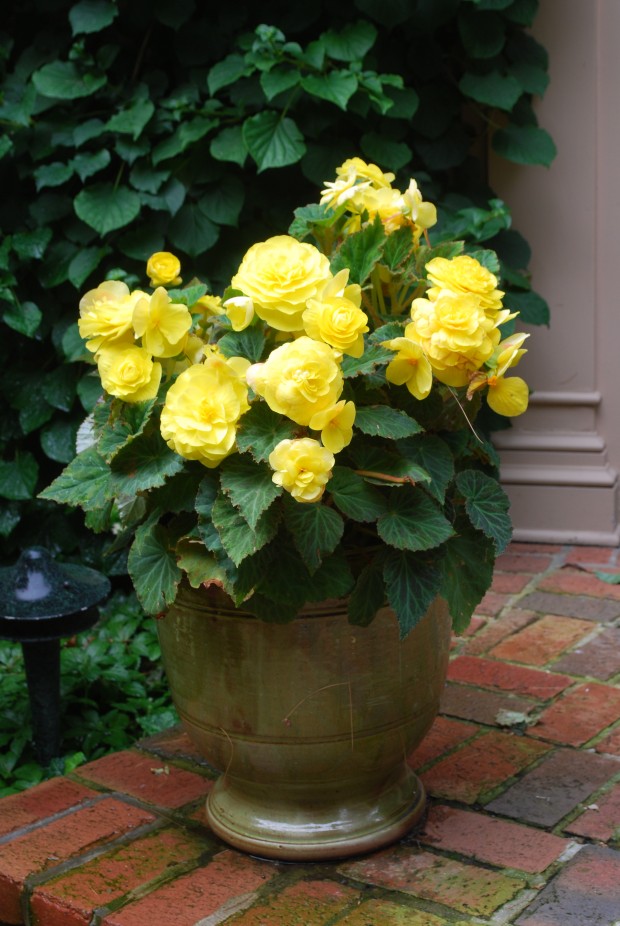 I want to say that his pots gave him immense pleasure and satisfaction. No matter what day I would drive by, the pots always looked perfectly tended and beautiful. We took care of maintaining the rest. I will say they had a rich and involved gardening life long before I met them. I worked for them for many years, before they sold this property, and moved to the east coast to be close to their children.
I want to say that his pots gave him immense pleasure and satisfaction. No matter what day I would drive by, the pots always looked perfectly tended and beautiful. We took care of maintaining the rest. I will say they had a rich and involved gardening life long before I met them. I worked for them for many years, before they sold this property, and moved to the east coast to be close to their children.
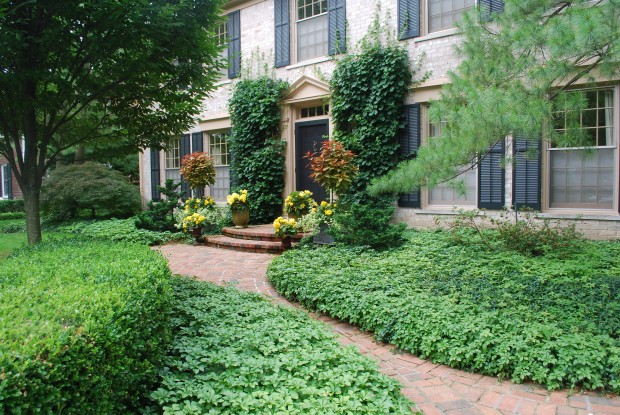 The changes we made in this landscape were over a period of twelve years. I was happy for my part in this. Their thoughtful thirty years gardening before me, and my twelve years of revisions made for an updated design that worked for them.
The changes we made in this landscape were over a period of twelve years. I was happy for my part in this. Their thoughtful thirty years gardening before me, and my twelve years of revisions made for an updated design that worked for them.
 They sold this property several years ago. Ill health and age triggered a change. I understood this. Landscapes and lives evolve. They day they lost that old maple-a big loss. The day they gave up this house and landscape, and moved away-a big loss for me. Small properties, such as they are, have a big story to tell. A big hearted landscape design on a small property- all about a story.
They sold this property several years ago. Ill health and age triggered a change. I understood this. Landscapes and lives evolve. They day they lost that old maple-a big loss. The day they gave up this house and landscape, and moved away-a big loss for me. Small properties, such as they are, have a big story to tell. A big hearted landscape design on a small property- all about a story.

